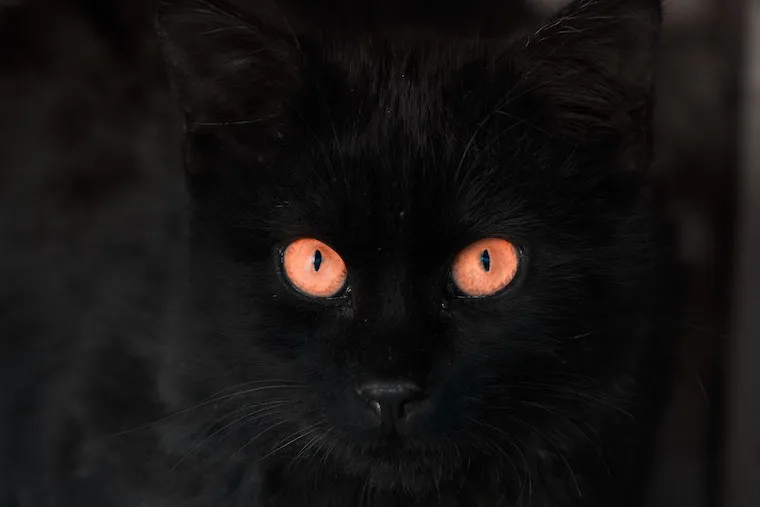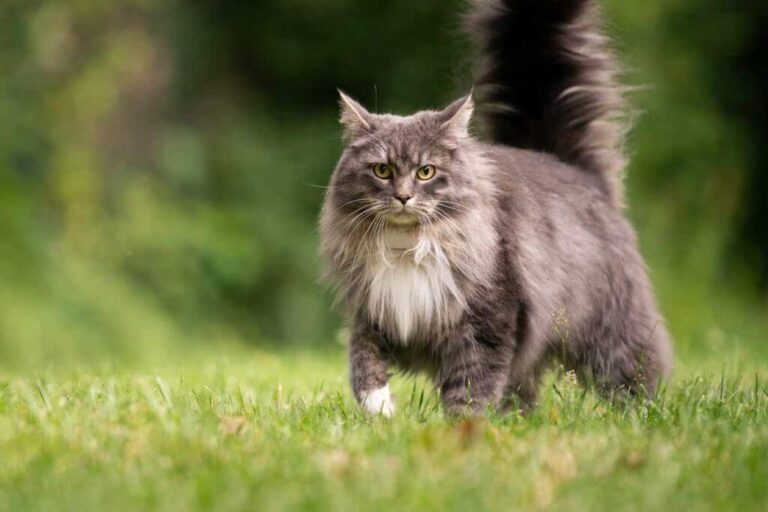Cat Vision: Unveiling the Color Spectrum
Ever wondered what the world looks like through your feline friend’s eyes? While we humans revel in a vibrant spectrum of colors, our furry companions perceive the world in a different hue. It’s a fascinating journey into the realm of cat vision, where shades of blue and yellow reign supreme while reds, oranges, and browns remain hidden in a grayscale world.
Contrary to the old notion of cats seeing only in black and white, modern science reveals a more nuanced reality. Thanks to groundbreaking research, we now know that cats possess a unique visual system tailored to their nocturnal lifestyle and hunting prowess. From their distinctive vertical-slit pupils to the composition of their retinas, every aspect of their ocular anatomy tells a tale of evolutionary adaptation.
Join me as we delve into the captivating world of cat vision, exploring the mysteries behind their color perception and uncovering the secrets of their visual acuity. This journey promises to shed light on the dazzling, albeit limited, palette of colors that enriches our feline companions’ world.
Contents
- 1 What Colors Can Cats See?
- 2 Cat Vision: Understanding Feline Eye Anatomy
- 3 Do Cats See Color the Same Way as Dogs?
- 4 Color Blindness in Cats
- 5 Can Cats See Colour?
- 6 How Do Cats See Colour?
- 7 What Does a Cat’s Vision Look Like?
- 8 How Do Dogs See Colour Differently to Cats?
- 9 What Colors Can Cats See the Most?
- 10 What Colors Can Cats See in the Dark?
- 11 What Color Do Cats See at Night?
- 12 Conclusion
What Colors Can Cats See?
Cats can see color, though not as vividly as humans. They perceive shades of blue-violet and yellow-green best but struggle with red, orange, and brown. However, they compensate with superior night vision and motion detection, making them adept hunters in low-light conditions.
Cat Vision: Understanding Feline Eye Anatomy
Cats’ eyes are marvels of evolution, equipped with adaptations that suit their predatory lifestyle. While sharing basic structures with human eyes, such as the cornea, iris, lens, and retina, cats have unique features that set them apart. One notable difference is their vertical-slit pupil, which helps regulate the amount of light entering the eye and enhances their ability to detect movement, particularly in low-light conditions.
Moreover, cats possess a higher density of rod cells in their retinas compared to cones. Rod cells are specialized for detecting light levels and motion, making them crucial for hunting at dusk and dawn when prey is most active. Although cats do have cone cells responsible for color perception, they have fewer types of cones compared to humans, limiting their ability to discern a wide range of colors.
Do Cats See Color the Same Way as Dogs?
Cats and dogs share similarities in their color vision capabilities, primarily perceiving the world in shades of blue and yellow. However, there are some differences in how they interpret colors. While both species may struggle to distinguish between red, orange, and brown hues, cats are believed to have a more limited color palette compared to dogs.
Dogs, on the other hand, have been shown to discriminate better between shades of blue and yellow. These distinctions in color perception may reflect each species’ evolutionary history and hunting strategies. Despite these differences, both cats and dogs excel in utilizing their vision to navigate their environments and fulfill their natural behaviors.
Color Blindness in Cats
Color blindness, or the inability to distinguish specific colors, is a condition that affects some individuals across various species, including humans. While it’s challenging to determine whether cats experience color blindness in the same way humans do, there is evidence to suggest that their color perception may be limited compared to humans.
Cats primarily rely on motion detection and brightness rather than color when hunting, suggesting that color may not be as critical for their survival. However, certain medical conditions affecting the retina, such as retinal degeneration, can impact a cat’s ability to perceive colors accurately. Regular veterinary check-ups are essential for monitoring a cat’s eye health and addressing any potential vision issues early on.
Can Cats See Colour?

Contrary to the misconception that cats see the world in black and white, cats can indeed perceive some colors, albeit in a more limited capacity than humans. Their vision is optimized for low light conditions, with a focus on detecting motion and prey.
While cats may not appreciate the full spectrum of colors as humans do, they are still capable of distinguishing between shades of blue-violet and yellow-green. Understanding a cat’s color vision can help pet owners make informed decisions when choosing toys, accessories, and environmental enrichment to enhance their feline companion’s quality of life.
Recommended: How Many Cats Roam Our Planet?
How Do Cats See Colour?
Cats’ color perception is mediated by specialized cells called cones in their retinas. Unlike humans, who have three types of cones for detecting red, green, and blue wavelengths of light, cats have only two types of cones. This means their ability to discern colors is more limited, resembling that of individuals with red-green color blindness in humans. As a result, cats primarily rely on their other visual abilities, such as motion detection and night vision, to navigate their surroundings and engage in hunting behaviors.
What Does a Cat’s Vision Look Like?
To understand how cats perceive the world, it’s essential to consider not only their color vision but also their overall visual experience. While cats may see some colors, their vision appears less vibrant and detailed compared to the human eye. Objects further away may appear blurry to cats, as their visual acuity is optimized for closer distances.
However, cats have a wider field of view compared to humans, allowing them to detect movement and potential prey from various angles. Additionally, their superior night vision, aided by a specialized structure called the tapetum lucidum, enables them to see in low-light conditions more effectively than humans.
How Do Dogs See Colour Differently to Cats?
While cats and dogs share similarities in their color vision, there are notable differences between the two species. Dogs, like cats, primarily perceive the world in shades of blue and yellow. However, dogs may have a slightly more comprehensive range of color discrimination compared to cats.
Dogs also have a different distribution of cone cells in their retinas, which may contribute to variations in color perception between the two species. Despite these differences, both cats and dogs rely on their visual abilities to navigate their environments, interact with their surroundings, and engage in natural behaviors such as hunting and play.
What Colors Can Cats See the Most?
Cats are most sensitive to colors within the blue-violet and yellow-green spectrum. While they may not perceive the full range of colors as humans do, these shades are more prominent in their visual perception. Objects or stimuli that fall within these color ranges are likely to be more easily discernible to cats compared to colors outside of these spectrums.
What Colors Can Cats See in the Dark?
In low-light conditions, cats rely heavily on their superior night vision to navigate their surroundings. While their color perception may be diminished in darkness, cats can still distinguish between shades of blue-violet and yellow-green. This ability allows them to hunt effectively during dawn, dusk, and nighttime when their prey is most active.
What Color Do Cats See at Night?
At night, cats primarily perceive the world in shades of blue and gray. This is due to their enhanced sensitivity to short-wavelength light, which corresponds to blue and violet hues. While they may not perceive colors as vividly as they do in daylight, their ability to see in low-light conditions gives them a significant advantage when hunting and exploring their environment during the nighttime hours.
Note: The advice provided in this post is intended for informational purposes and does not constitute medical advice regarding pets. For an accurate diagnosis of your pet’s condition, please make an appointment with your vet.
Conclusion
In conclusion, understanding the colors that cats can see offers valuable insights into their unique visual abilities and enhances our appreciation for their sensory world. While cats may not perceive colors as vividly as humans do, they possess remarkable adaptations that enable them to thrive in their natural environments. From their specialized retinal structure to their superior night vision and motion detection, cats have evolved to excel in hunting and navigating low-light conditions.
By recognizing and accommodating their color perception limitations, pet owners can create enriching environments tailored to their feline companions’ needs. Ultimately, a deeper understanding of cat vision fosters stronger bonds between humans and cats, enriching the lives of both pets and their caregivers.
- Golden Retriever Pros and Cons: What Every Pet Parent Should Know - 15 September 2025
- Cane Corso Dog Breed: Health, Care, and Lifespan - 14 September 2025
- Catahoula Leopard Dogs: Description, Temperament, Lifespan, & Facts - 21 July 2025







